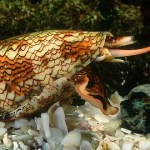nerve
Image of a fin whale by Aqqa Rosing-Asvid via Wikimedia Commons
Fin whales have big mouths, really big mouths. When your meals consist of tiny krill, it is understandable why you would evolve the ability to stretch your mouth super-wide.
Fin whale dinner. Image by Øystein Paulsen via Wikimedia Commons.
With each meal comes a lot of water, which expands a pouch in the bottom of their mouths. As the pouch expands, all of the tissues in the pouch expand as well including blood vessels and nerves. Stretchy nerves caught the interest of of Dr. Margo Lillie who…
I came across a neat article in Scientific American that described how reindeer and elk regrow their antlers every year. Could you imagine putting that much energy into growing new bone each year complete with a velvety cover containing nerves, skin, and blood vessels? Although full-grown antlers lose their blood supply and animals scrape the velvet layer off to reveal just bone.
Researchers have explored whether understanding this amazing process of annual antler regeneration could lead to new therapies to regrow nerves or organs in humans. The nerve fibers that…
Professor Wayne Vogl and colleagues at the University of British Columbia discovered that rorqual whales can gulp volumes of water that are bigger than their body. Nerves in the mouth and tongue make this amazing feat possible as they can actually stretch to twice their resting length without sustaining damage. Dr. Vogl was quote in CBC News saying, "The nerves that supply these remarkably expandable tissues in the floor of the mouth of rorqual whales ... are very stretchy, they're like bungee cords." This is unusual as the nerves of most vertebrate species have…
Here I thought snails were just cute little creatures that liked to dine in my vegetable garden. You can imagine my surprise to learn there are also carnivorous snails....with venom. New research shows that conotoxin, isolated from cone snail venom, can numb pain. Conotoxin is also reportedly 100 times more potent than morphine at treating chronic nerve pain. The added benefit is that it does not appear to be addictive.
The snail to the rescue is the marine carnivorous cone snail common to the Indian Ocean and western Pacific. It hunts by stabbing prey and injecting a venom that paralyzes…
Scientists have been able to restore locomotion in paralyzed rats using a combination of nerve stimulation and engaging the mind by having the rats complete simple tasks (like obtaining treats). In the newly published research, Dr. Grégroire Courtine (University of Zurich and the Swiss Federal Institute of Technology) and his team created a rat model of spinal cord injury. After designing a support jacket for the rats, they used a combination of neurotransmitters and electrical impulses to excite the nerves to produce involuntary stepping actions, which alone did not activate…

